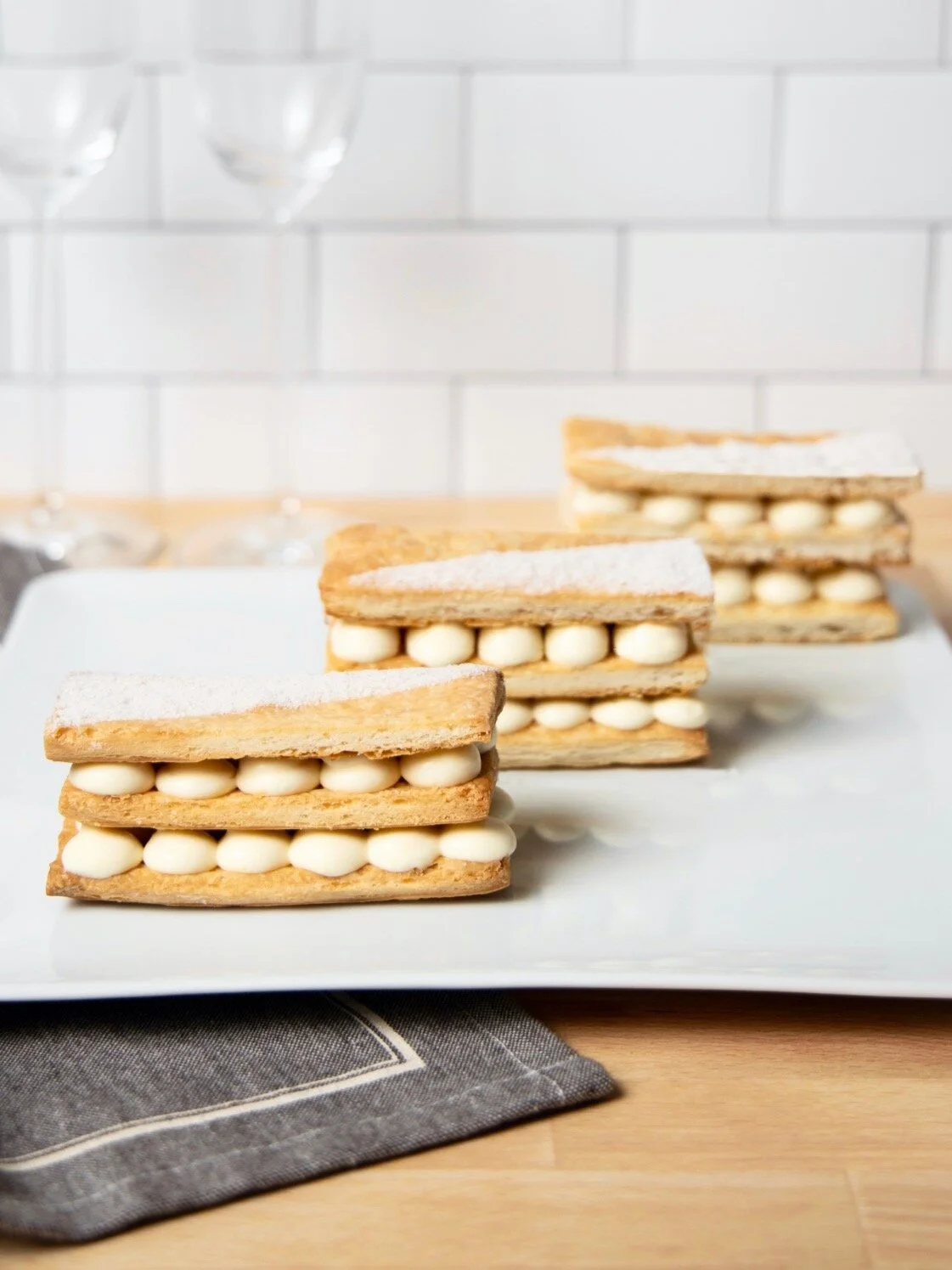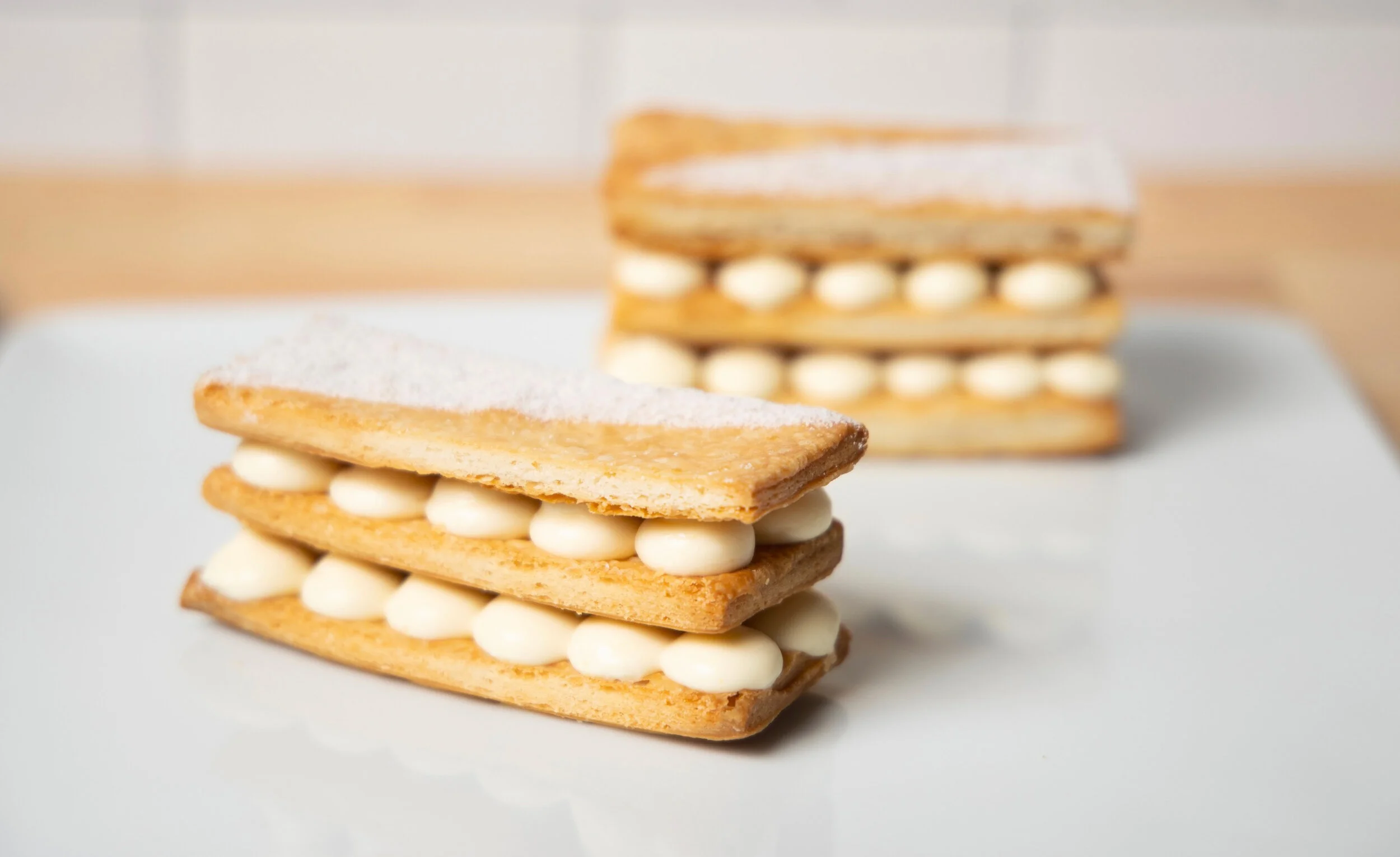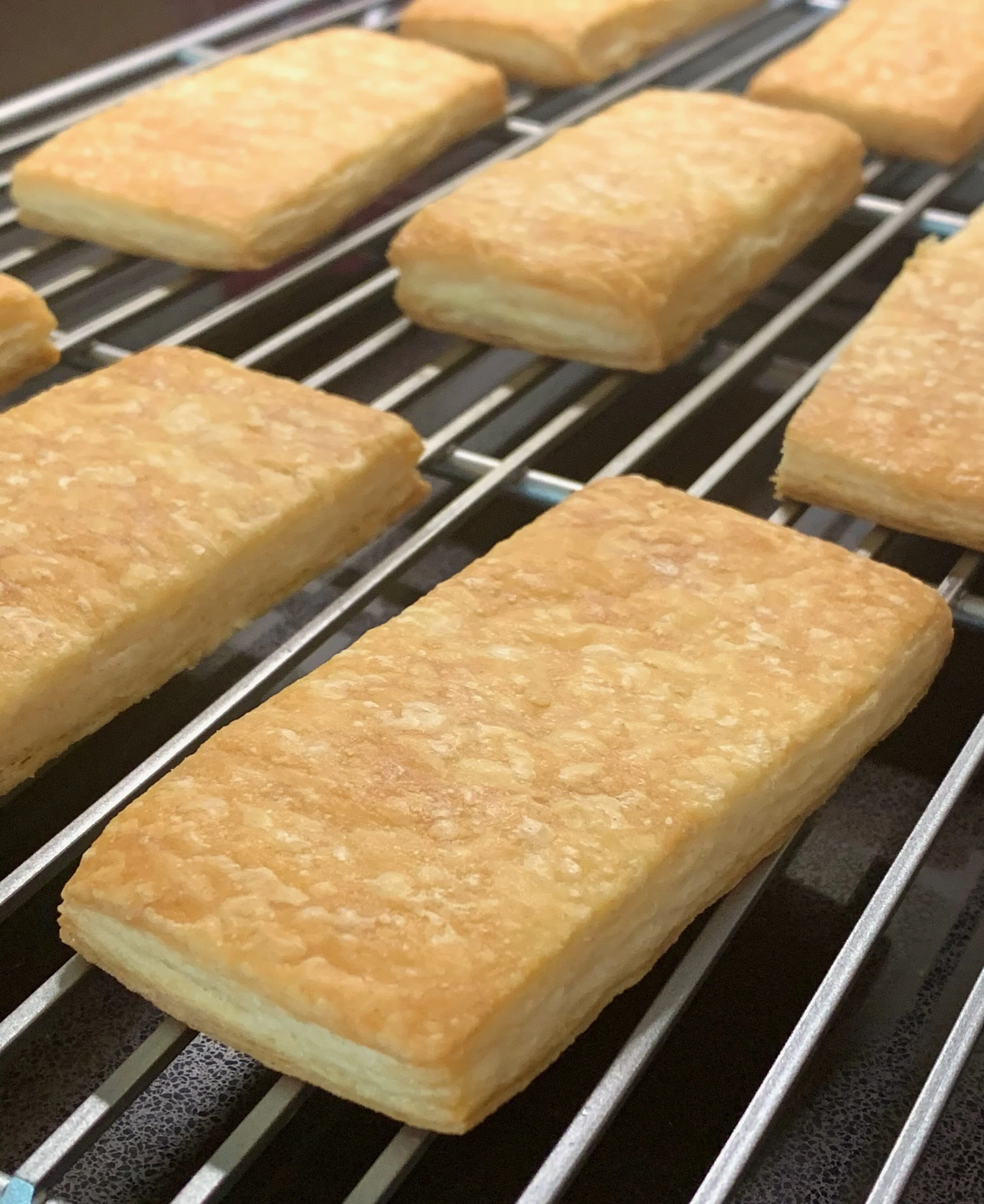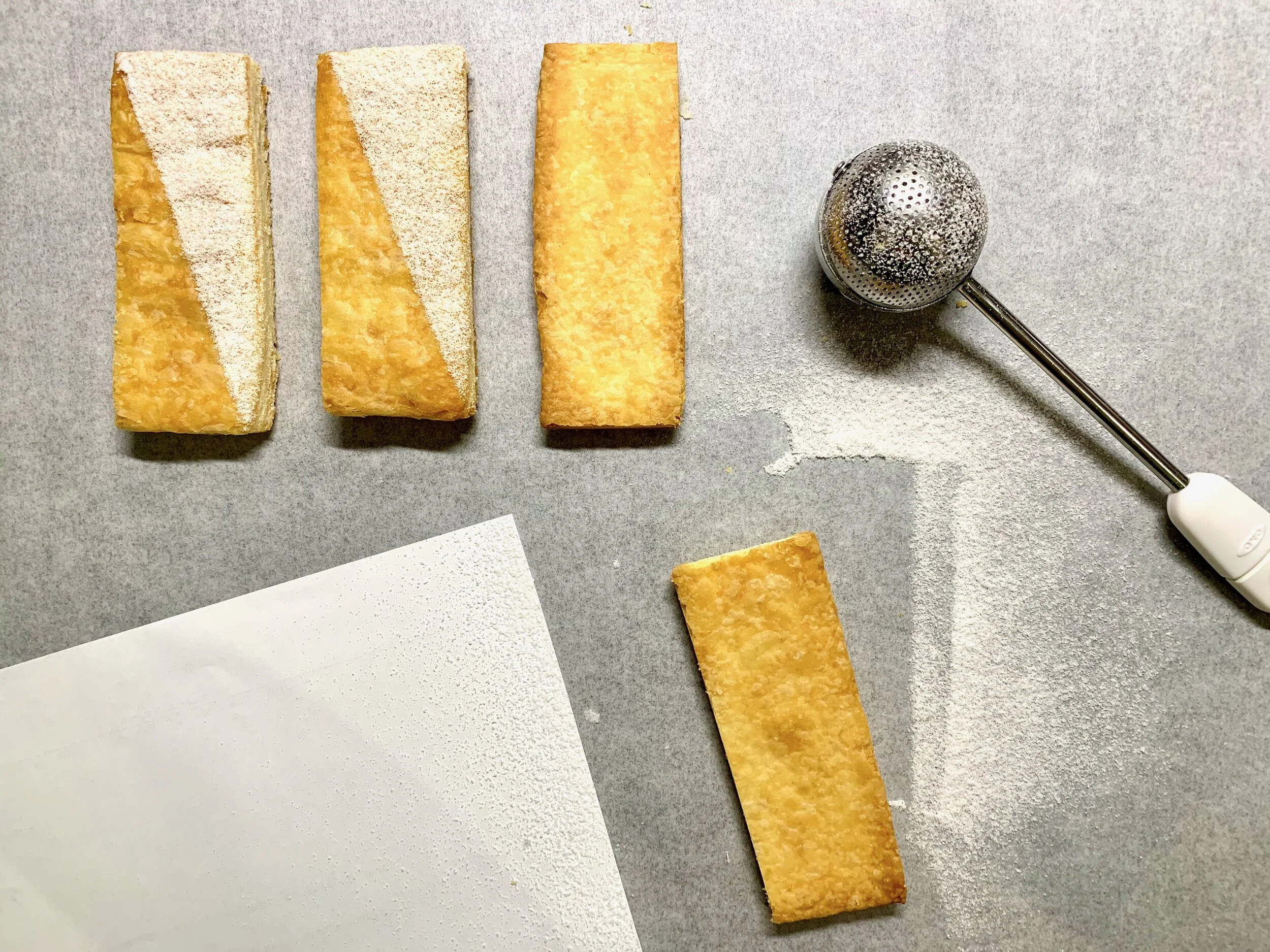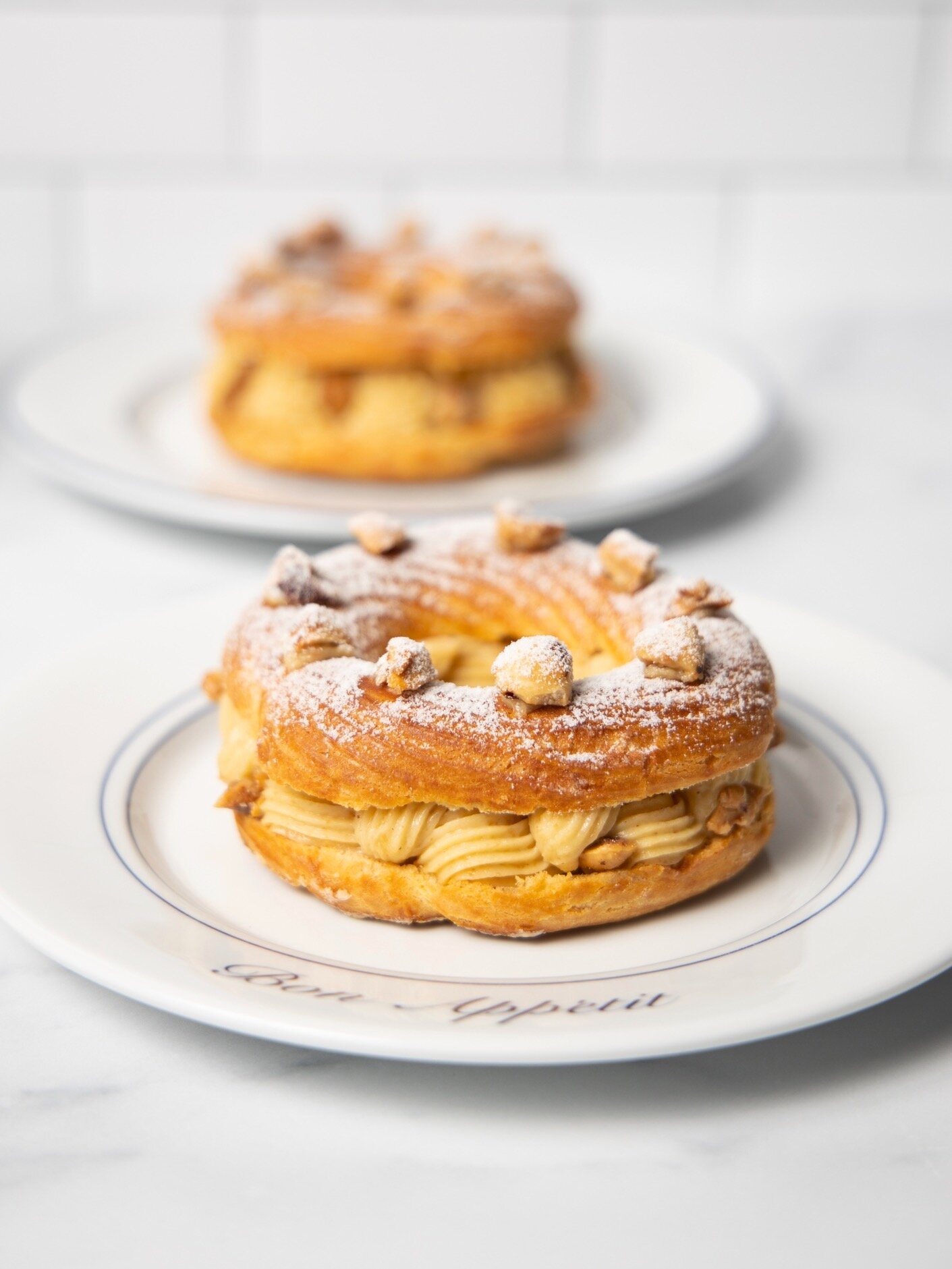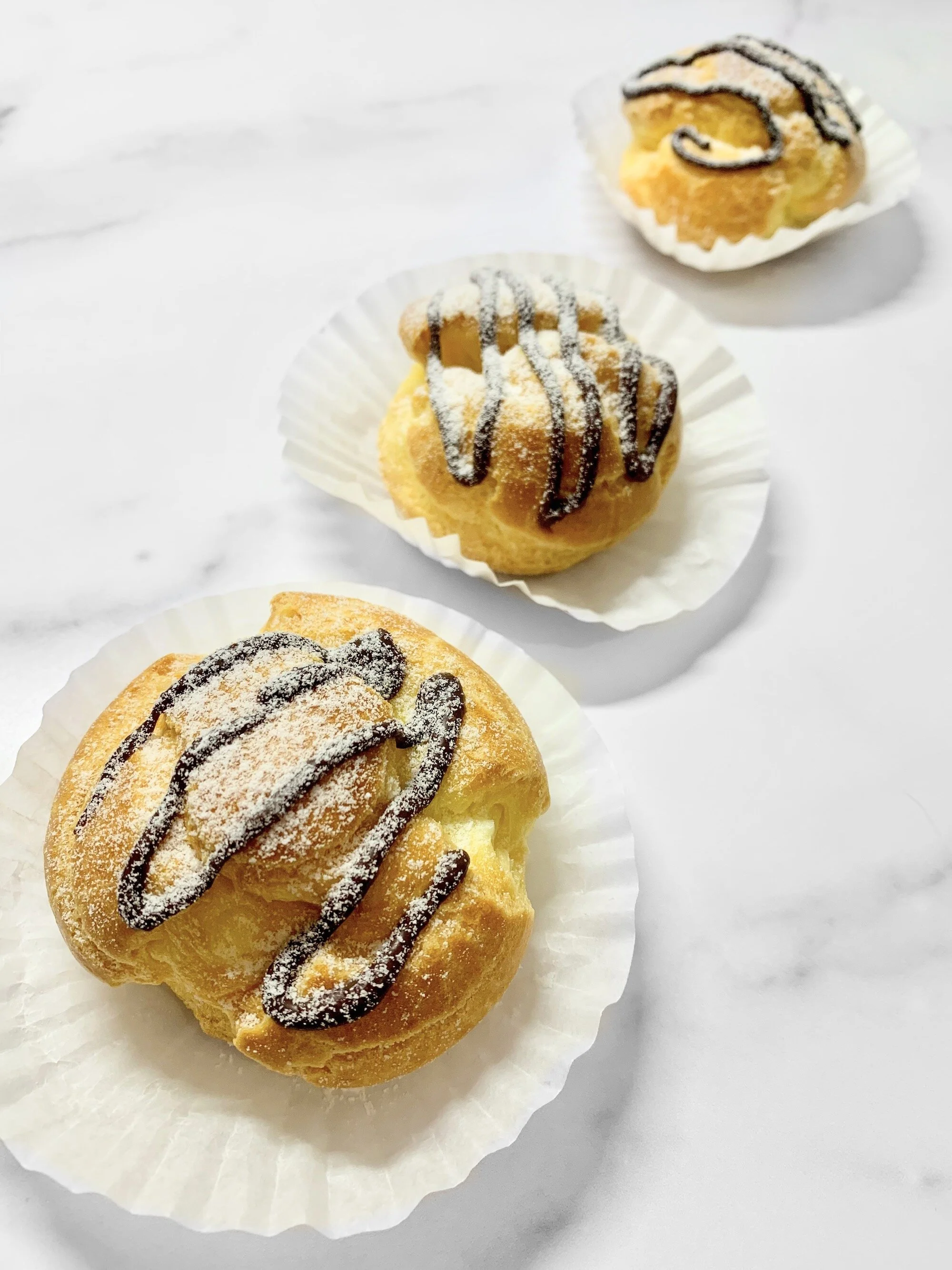Mille-Feuille
Every July 14, the French celebrate La Fête Nationale or Bastille Day. I’ve decided to honor the holiday by dedicating this week to French pastries and desserts. Of French descent or not, any reason to indulge in heavenly pastries is a good one in my opinion, so I’m kicking off the celebration with Mille-Feuille: crisp, puff pastry layered with a luscious vanilla diplomat cream.
Mille-Feuille translates to “thousands of leaves”. The name comes from the layers that are created when the puff pastry bakes in a very hot oven. The butter fries the dough and makes air pockets that in turn create layers. Traditional puff pastry can take a lot of skill and time to perfect, so this recipe calls for rough puff pastry or blitz puff pastry which takes much less time and still creates incredible, flaky, buttery layers.
A simple powdered sugar or cocoa topping is traditional, but feel free to top as you’d like! Vanilla or chocolate icing and berries are all good options.
What’s the difference between Mille-Feuile and Napoleon? Mille-Feuille are traditionally filled with pastry cream or whipped cream and Napoleon are filled with an almond cream.
PS. The same rough puff pastry can be used to make these beautiful Berry Palmiers »
(photo by Daniel Marks)
The layers that happen when the pastry puffs up are key to a successful Mille-Feuille (or any puff pastry).
Mille-Feuille Recipe:
Plan ahead:
Both pastry dough and diplomat cream need time to chill, so read through the recipes and plan accordingly.
Yield:
8 pastries
Difficulty:
Moderate
Ingredients
Rough Puff Pastry:
1 recipe Rough Puff Pastry Dough - see recipe
Diplomat Cream:
½ cup granulated sugar
4 TBSP cornstarch
4 large egg yolks, room temperature
1½ cups whole milk
1½ tsp vanilla extract
⅛ tsp salt
4 TBSP unsalted butter cut into cubes, room temperature
¾ cup heavy whipping cream, cold
1 TBSP powdered / confectioners sugar
Topping:
3 TBSP powdered / confectioners sugar for dusting
Instructions:
Start the diplomat cream:
You start with a pastry cream. Whisk the sugar, cornstarch, and flour together in a medium size bowl. Add the room temperature egg yolks and whisk until fully blended and thick.
Add milk, vanilla extract, and salt to a saucepan with a heavy bottom and combine over a medium heat. Stir occasionally with a wooden spoon or rubber spatula. Bring to a consistent simmer.
Once the milk has come to a simmer, turn heat down to low and add approximately ⅓ cup of the hot milk to the egg mixture. Vigorously whisk the eggs and milk together until combined (this should just take a few seconds) then slowly pour the combined mixture back into the pot, whisking as you pour.
Tip: Tempering the eggs is an important step in which you incorporate the eggs into the cream without cooking them into curds.
Turn the heat back up to medium and whisk constantly until the cream becomes very thick and bubbles break on the surface. 4 or 5 minutes.
Is it done? Dip a wooden spoon into the cream. Bring it out and run your finger across the back of it. If the cream stays in place and the bare spot where you ran your finger across stays clear, it is ready.
Set a mesh strainer on top of a clean bowl and pour or press the thick cream through.
One cube at a time, whisk the room temperature butter into the cream making sure it is completely blended in before adding more. This may take a little time but it will blend.
When all of the butter has been added, press a piece of plastic wrap directly on the pastry cream so a skin doesn’t form on top, and refrigerate until cold. (We’ll add the heavy cream and powdered sugar later.)
Prepare the rough puff pastry:
Preheat the oven to 400° F.
Important: The oven needs to be hot enough for the butter to fry the dough. If the oven is not at least 400°, the butter will just melt. I recommend using an oven thermometer to check before you bake.
Turn a baking sheet over so it is bottom side up and place a piece of parchment on top. Set aside a second piece of parchment paper and a second baking sheet.
Take the puff pastry out of the refrigerator, cut it in half crosswise. Rewrap one half and return it to the refrigerator.
On a floured work surface, roll out the puff pastry dough into a rectangle about ⅛ inch thick. Cut 2 inch by 4 inch rectangles and place onto prepared baking sheet about an inch apart.
Tip: Cut the rectangles adjacent to each other. You can’t re-roll the scraps like you can with cookie dough.
Place the reserved parchment on top of the cut pastry dough and then place the second baking sheet on top of that, right side up, so the dough is sandwiched between two pieces of parchment and two baking sheets. This second baking sheet weights the pastry down and keeps it from puffing up too much. You want layers, but not too much height with these rectangles.
Tip: If it has taken you a long time to cut the rectangles, place the baking sheet in the refrigerator for 15 - 20 minutes for the butter to firm up before baking.
Bake for 15 minutes, then remove the top baking sheet and parchment and continue to bake until a deep golden brown.
Let cool completely on a wire rack before piping the pastry cream. Repeat with remaining dough.
In the meantime, finish the diplomat cream:
Whip the heavy cream by hand with a whisk or with the whisk attachment of a mixer. When it starts to get foamy, add the powdered sugar and continue whipping until stiff peaks form. Remove the pastry cream from the refrigerator and give it a few turns with a whisk. Add ½ of the whipped cream to the pastry cream and gently fold together with a whisk. Repeat with more until desired consistency and flavor is reached. It should be stiff and move when you tilt the bowl. Cover and return to the refrigerator until ready to assemble.
Assemble:
Take 8 of the pastry rectangles, place on a clean sheet of parchment and dust with powdered sugar. To achieve the triangle design I did, simply cover one half of the pastry with a piece of paper while powdering. Super easy.
Add the diplomat cream to a pastry bag fitted with a ¼ inch piping tip. Pipe the cream onto the remaining rectangles of pastry. Stack two, add a powdered rectangle on top, and repeat with remaining pastry. Serve immediately, or refrigerate up to 3 hours. Any longer and the crisp pastry will soften too much.


